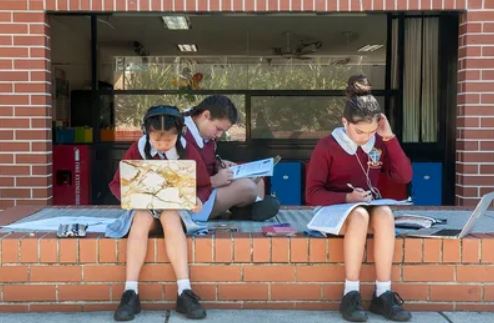
As rapid advancements in AI and other technologies transform Australia’s vast education landscape, schools are knuckling down on how to ensure this dizzying transformation is both manageable and to the benefit of staff and students.
For Lisa Plenty, Director of Digital Learning and Innovation at Radford College in the ACT, this is a welcome challenge.
While Plenty’s journey began as an art teacher, this experience nurtured her growing fascination with digital mediums, which led to qualifications in Graphic Design. It wasn’t long before her unquenchable thirst for innovative pedagogies saw her achieve a Master of Education in Knowledge Networks and Digital Innovation from Charles Sturt University.
Indeed, Plenty’s efforts throughout her teaching career have not only earned her the title of an Apple Distinguished Educator but also propelled Radford Junior School to the esteemed status of an Apple Distinguished School.
When asked how she has integrated digital technology into the curriculum to enhance student engagement and academic achievement, Plenty said the first step has always been to question the learning value of the technology that the school selects.
“While technology in itself can be engaging, our focus is on genuine conceptual learning, where technology supports and extends learning,” Plenty told The Educator.
“We have a cohesive device platform, with iPad from Pre-Kindergarten to Year 8 and we provide a curated set of apps. The iPad is an easy device for students and teachers to learn and troubleshoot. Familiar, multipurpose, scalable applications allow students and teachers to focus cognitive load on learning.”
Plenty said student safety and identity protection is also an important consideration in the school’s curated approach.
“We avoid technology that includes distracting and potentially risky advertising content, or requires additional student accounts.”
A ‘just in time’, not ‘just in case’ approach
To help teachers become more proficient and creative in using digital tools for teaching, Plenty said professional learning needs to be “hands-on, relevant and have multiple entry points depending on confidence and existing skills.”
“Wherever possible it is important for teacher professional learning to be immediately relevant – the idea of ‘just in time’ rather than ‘just in case’ is a good lens through which to consider purpose and timing of professional learning,” she said.
“Our school has invested internally in staff to support teacher coaching and learning, rather than engaging experts for one-off sessions that may not be contextually relevant or allow for ongoing implementation support.”
Plenty said that in addition to in-house in-person learning sessions, Radford College provides a range of interactive guides, posters for quick reference, independent self-paced learning modules, weekly tips and the option of accessing small group or one-to-one coaching.
“We also emphasise the benefits of creating with technology, rather than passive consuming of content.”
When it comes to effectively assessing the impact of digital technology on student learning and engagement, Plenty said sometimes qualitative observations can be more valuable in recognising success than quantitative measures.
“The ‘aha’ moments where a student breaks through a learning challenge are rarely quantifiable, but deep in quality,” she said.
“We see success and impact where students and teachers feel confident and where students can articulate how technology has supported their learning.”
Plenty said one of the most exciting allowances of digital technology is for learning to be more personalised.
“I have seen significant impact where students who have difficulty engaging in default modes of learning experience a far more equitable and inclusive learning experience through using multimodal technology or choice in the mode of learning evidence.”
Leaders must take hands-on approach
Plenty said principals must be involved and lead from the front if they wish to foster a culture of digital innovation and continuous learning among teachers.
“The involvement of leadership teams in digital learning within their school is vital in creating a culture of innovation,” she said.
“Innovation can flourish where school leaders model themselves as learners and encourage a culture where a level of failure is embraced as part of learning and improving.”
Plenty said teachers need to have space for learning and innovation and as time is always a premium in schools, a creative approach can be necessary.
“Impact is more likely where school leaders prioritise time and consider timetabling for teachers to collaboratively learn, design curriculum, co-teach and evaluate the success of new initiatives together,” she said.
“Valuing the employment of staff to lead and support such initiatives is also important.”


